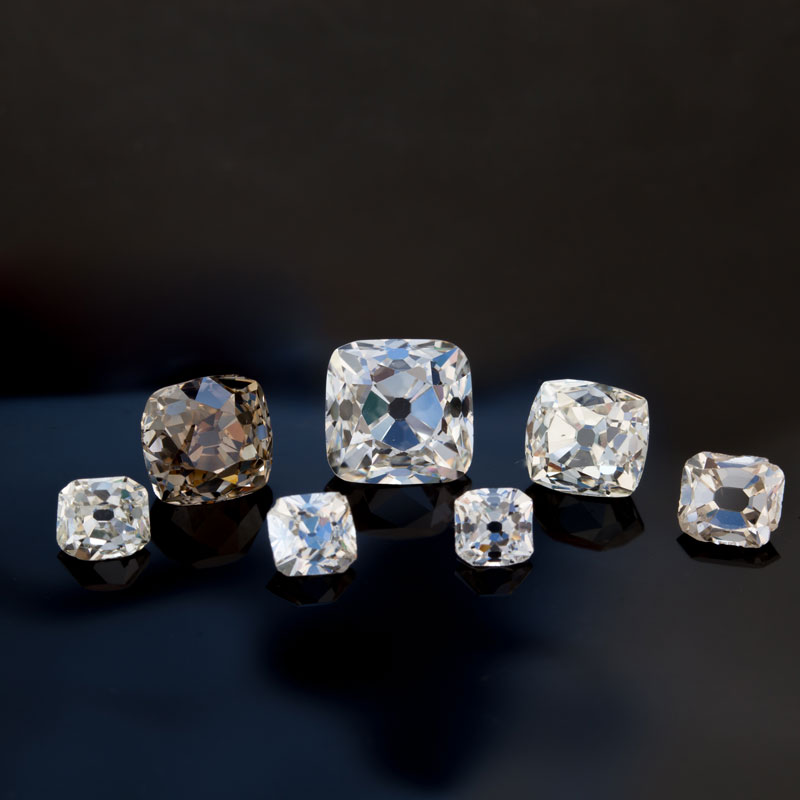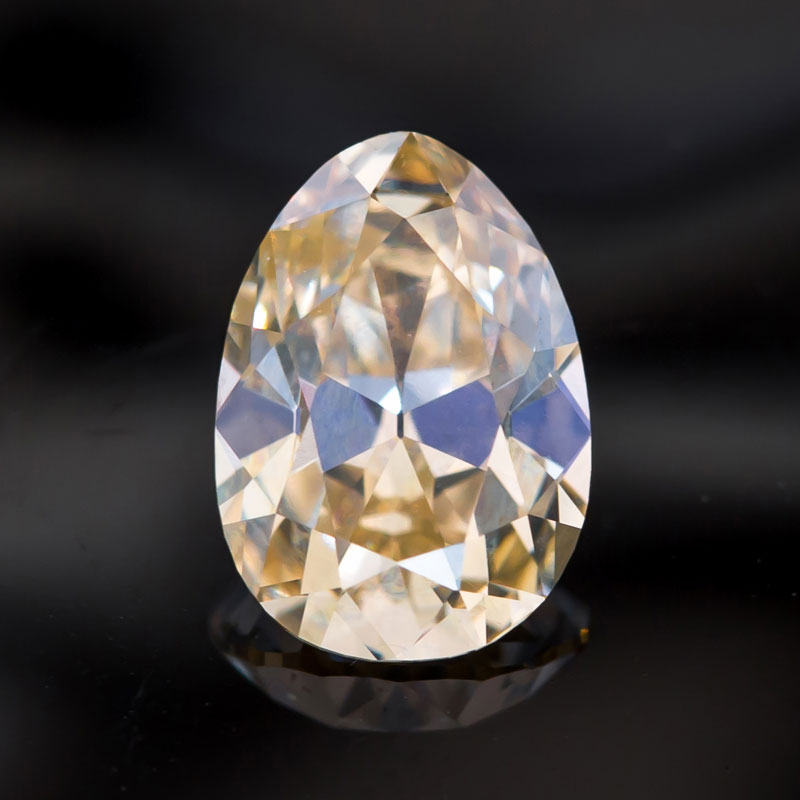Why You Might Choose an Antique Diamond

INTERVIEW WITH JARED HOLSTEIN OF PERPETUUM JEWELS
The number of shoppers seeking a more ethical or sustainable choice for their diamond engagement ring is on the rise. These conscientious couples want to dig deeper into diamond alternatives and hope to select an engagement ring that aligns with their personal values. Sadly, the diamond supply chain can be vague at best. And some certifications, including the Kimberly Process, are not all they tout themselves to be. While a truly ethical or fair-mined option might not yet exist on the market, there are some methods of diamond acquisition that you can feel a bit better about. One of these options is to purchase an antique or post-consumer diamond.
In addition to their reduced environmental impact, antique diamonds are seriously beautiful and filled with personality. Antique diamonds offer a distinctive visual experience with how their hand-cut facets play with light. They are also rarer than the modern day cuts on the market. And best of all, antique diamonds can be a more economical alternative to a modern-cut gem of the same quality, who often carry a premium price tag if their shape is currently “on trend.”
Here to unpack the details of what it means to purchase antique and post-consumer diamond is Jared Holstein of Perpetuum Jewels, a New York and San Francisco based wholesaler and a SCS Certified Responsible Source for post-consumer recycled diamonds.

What are Post-Consumer Recycled Diamonds? Is there a Difference Between Antique and Post-Consumer?
Post-consumer recycled diamonds are stones were owned by members of the public and have reentered the supply chain, be they 300 years or 3 years old. The term antique is generally applied to items at least one hundred years old; stones cut in the 1930s and 40s still exhibit antique cutting styles even if they’re not quite one hundred years old, so can be considered vintage.
It’s a fair bet that almost all antique diamonds are also post-consumer. Getting into semantics, there’s a difference between recycled and post-consumer recycled, which is why both percentages are listed on the wrapper when you buy a ream of copy paper. There are diamonds sold as recycled which were never owned by a member of the public.

What Kind of Diamonds are Offered by Perpetuum Jewels?
Our post-consumer recycled diamonds and colored gemstones, be they antique or more modern, are certified as such by SCS Global Services, an environmental auditing firm. In order for SCS to certify our stones as 100% post-consumer recycled, we had to first become a Certified Responsible Source. Qualifications include verified supplier screening and risk assessment practices, commitment to ethical and transparent business practices, measurably reduced environmental impact over time and regular audits. The certification process is lengthy, the volume of ongoing records collection and required documentation intense, but we feel it’s worth it.
Having also been buyers, we were tired of always having to take people’s word regarding the origin of the stones they were selling. Every certified post-consumer gemstone or parcel we sell has a unique identifying code, and on stones over a half a carat, this number is laser inscribed onto the girdle as well as printed on the SCS Certified Certificate that accompanies each of them.
What are the Benefits of Choosing a Post-Consumer Diamond? And what are the Benefits of an Antique Diamond?
Part A: Post-consumer diamonds have the smallest carbon footprint (almost none) of any diamond you can buy, making them the most environmentally sustainable option-- no diesel-guzzling machinery tore open the earth to find them, no electricity was pulled into a chamber to grow them. The most efficient diamond mining or synthetic diamond growing operations still imbue each stone with sizable carbon footprints or other environmental baggage.
Part B: The inherent charm of antique cuts, their individuality, that they are steeped in history-- frankly this is what keeps the diamond business interesting to us. Antique diamonds sparkle differently than modern cut diamonds and when you see one in person, their unique romance and character is palpable. Old cuts, which were cut to different proportions than modern diamonds, offer superior light performance in many real world lighting conditions (dimly lit restaurants, etc.) because they were designed to perform well under candle, oil and then gas and early (dim) electric light. Think larger pops of color and light as opposed to the more discoball effect of modern cuts.
Old cuts also often “face up” with better color than their modern equivalents, meaning a client concerned with how white their diamond looks can either spend less money for the same look, or get into a larger stone for the same amount of money.
Unlike newly mined or manufactured diamonds, antique stones are truly rare and only growing rarer. Botswana alone mines more diamonds in one month than the entire world produced in 1900. And stones cut before diamonds were discovered in South Africa in 1866/67 are infinitely more rare still, because they came from the much scarcer alluvial deposits in Brazil, Borneo, or much less likely, India.
Diamonds have always been reused— they’ve been precious since people started setting rough octahedron crystals in medieval jewelry and they’ve always been the hardest gemstone on earth, so they tend to stick around. Many of the world’s diamonds, indeed some of its most famous and historic diamonds, have been recut multiple times, over multiple centuries and traded across several oceans.
About the Author
As a long-time jewelry designer, I love the process of sculpting, engraving, and setting everything by hand. Through my exploration of texture-driven techniques and organic shapes, I hope you can feel my passionate energy and intention behind every piece.
About the Jewelry
Inspired by organic silhouettes, textures, light, and shadows for the collector with an eye for natural beauty.
About the Studio
Every piece is dreamed up and brought to life in my sunny Berkeley, California studio! You’re welcome to make an appointment to do a little in-person shopping and try things on.





